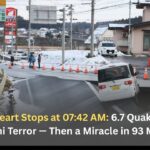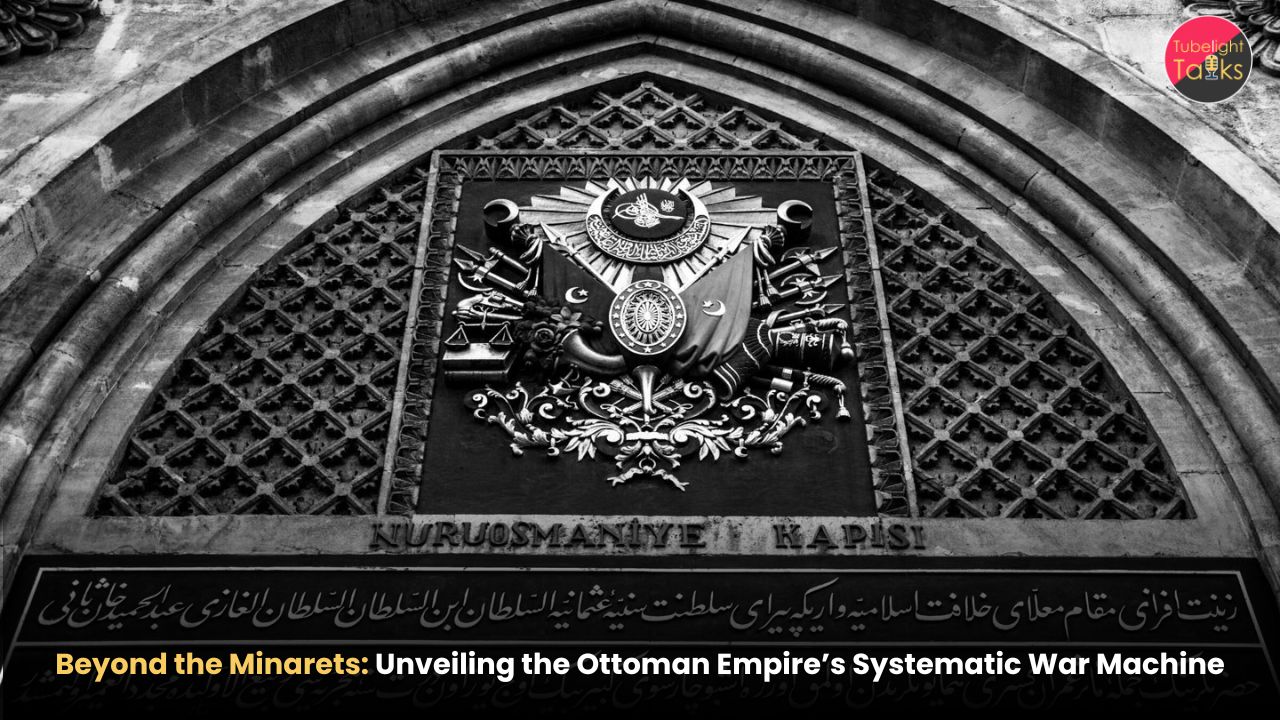This is the story of how humans learned to split the atom, mastered the chain reaction, and built the most destructive weapons in history and also unlocked a new way to light our homes. But to understand how it all began, we need to understand the very thing that makes all of this possible—the atom itself.
The Atom: Where It All Begins
Everything around us, from the stars in the sky to the screen you’re reading, is made of atoms. These tiny building blocks are themselves composed of even smaller particles: protons and neutrons clustered in a central core called the nucleus, with electrons orbiting it. The number of protons determines what an element is; for example, uranium is defined by its 92 protons. However, the number of neutrons can vary, creating different versions, or isotopes, of that element.
In heavy atoms like uranium-235 and plutonium-239, the nucleus is naturally unstable. Just hitting one of these unstable nuclei with a stray neutron can make it split into two smaller nuclei, but what would that even do? Let’s dive right into the concept of “Nuclear Fission” which forms the foundation of nuclear science.
How Nukes Work: The Birth of Nuclear Fission
Now coming over to the most interesting part: how do these small atoms cause a big explosion? Since hitting an unstable nucleus with a stray neutron can split it into two smaller nuclei.
When a heavy, unstable nucleus like uranium-235 (U-235) is struck by a neutron, it splits, releasing a tremendous amount of energy.
Crucially, it also releases several new neutrons. If these neutrons go on to strike other U-235 atoms, they too will split, creating an exponentially growing chain reaction. And apparently, this is the secret behind the power of an atom bomb!
(Image Courtesy: MIT Education)
This process of splitting, which releases an enormous amount of kinetic energy, is called fission. But here’s the catch: not every single atom can be turned into energy, and Albert Einstein’s famous equation, E=mc², explains how matter and energy are two sides of the same coin, implicating how even a tiny amount of mass packs an enormous amount of energy.
For instance, one gram of mass yields roughly around 89 trillion joules, which can power a house for 200 years! However, you can’t conventionally draw out energy like that from every atom, you’ll be needing big and unstable atoms like uranium and plutonium.
Along with the energy, a lot of neutrons are also released, which trigger further chain reactions by causing more neutron splits, and that’s how we obtain nuclear energy!
If this reaction is controlled well, we get nuclear power, which we’ll discuss in detail later in the article. But if we let it go uncontrolled, it would cause an atomic explosion, and that’s essentially how nuclear bombs work!
Beyond Splitting the Atom: Fusion
Fusion occurs when two light nuclei combine into a heavier one, releasing enormous energy—much greater than fission. Furthermore, this produces many times more energy than fission for the same amount of fuel.
Apparently, we’ll need an enormous amount of heat and pressure to get them close enough to combine, since nuclei are positively charged and naturally repel each other. These conditions are met by starting a fission explosion, which ultimately turns into a fusion explosion.
Now before we dive deep into the scientific and geopolitical aspects, let’s slow down the dial and walk through the evolution of nuclear energy and how mankind developed such weapons for mass destruction.
From Curiosity to Cataclysm: America’s Race to Harness the Atom
For most of history, the nucleus was considered an unbreakable, fundamental unit. However, this completely changed in 1938 when German chemists Otto Hahn and Fritz Strassmann discovered something baffling while bombarding uranium with neutrons: the uranium atoms were splitting into lighter elements.
This was noticed by physicist Lise Meitner and her nephew Otto Frisch, who were able to correctly interpret the results and termed this as nuclear fission.
The Race for the Bomb: A Letter and a Secret City
The discovery of fission couldn’t have come at a more dangerous time. Adolf Hitler’s Nazi Germany was on the rise, and the world’s leading physicists, many of whom had fled Europe, were terrified of what would happen if the Nazis developed an atomic weapon first.
Hungarian physicist Leo Szilard was one of the first to grasp the potential for a chain reaction, and he felt a chilling sense of urgency. He decided to warn the United States with the help of Albert Einstein. In August 1939, they sent a letter to U.S. President Franklin D. Roosevelt, warning him of the “extremely powerful bombs of a new type” that Germany might be building.
The Manhattan Project: Theoretical Physics into a Working Bomb
By 1942, the United States launched the Manhattan Project, a top-secret project to build a functional atomic bomb before the Germans. It was led by the pragmatic General Leslie Groves and J. Robert Oppenheimer, who headed the scientific effort.
A secret city was built from scratch in the remote desert of Los Alamos, New Mexico. Thousands of scientists, engineers, technicians, and their families lived and worked in complete isolation, their mission known only to a select few.
The “gadget,” as the bomb was codenamed, was being developed along two parallel paths. The first used uranium-235, which is very rare (only 0.7% of natural uranium) and incredibly difficult to separate from its more common cousin, U-238.
The second path used plutonium, a new, man-made element produced in nuclear reactors, which was easier to produce in quantity but harder to detonate.
The uranium bomb, known as a “gun-type” device, was relatively simple since it fired one subcritical mass of uranium into another, creating a supercritical mass and a chain reaction. The scientists were so confident it would work that it was never tested.
The plutonium bomb, however, required a much more complex implosion technique. A spherical core of plutonium had to be perfectly and simultaneously compressed by conventional explosives to achieve the critical density needed for an explosion.
The First Explosion
On 16 July 1945, in the desert of New Mexico, the first nuclear device, code-named Trinity, exploded with a light brighter than the sun.
Oppenheimer recalled a text from the Bhagavad Gita: “Now I am become Death, the destroyer of worlds.” And just like that, the nuclear age had begun.
A New World Order: The Cold War and the Hydrogen Bomb
By the time the bomb was ready, the war in Europe was over; Germany had surrendered in May 1945. But the brutal war in the Pacific raged on.
Amidst this chaos, the President of the United States, Franklin D. Roosevelt, died in April 1945, just before Germany’s surrender in May. At that point, Harry S. Truman, who had been Vice President for only about three months, became president.
However, President Harry Truman, who had only learned of the project after Roosevelt’s death, now faced a monumental decision. Faced with Japan’s refusal to surrender unconditionally and the prospect of a bloody invasion that could cost hundreds of thousands of American lives, Truman made his choice.
Hiroshima and Nagasaki: The End of WW2
On August 6, 1945, the uranium bomb, nicknamed “Little Boy,” was dropped on the city of Hiroshima, killing over 80,000 people instantly. This incident left a grave mark on world history.
But the tragedy didn’t stop there. Three days later, on August 9, the plutonium bomb, “Fat Man,” which was many times more destructive than the previous one, devastated Nagasaki. Japan surrendered on August 14, ending World War II.
Ultimately, Japan was forced to surrender on August 14, which marked the end of World War II.
The Race for Powerful Weapons
The world was completely changed after the Hiroshima and Nagasaki attacks. Nations realized the importance of a nuclear weapon, which led to a terrifying escalation.
The two big superpowers raced to build bigger and more powerful weapons, leading to the development of the hydrogen bomb (or thermonuclear weapon) , a device that uses a fission explosion to trigger a much more powerful fusion reaction, the same process that powers the sun.
The Nuclear Domino Effect: How the World Armed Itself
The United States’ monopoly, however, was short-lived. Once the principle was proven, the world’s major powers raced to join the club.
- The Soviet Union carried out their testing in 1949.
- The United States in 1952.
- France in 1960.
- China in 1964, and so on.
By the 1960s, atmospheric tests had sent radioactive fallout into the air and oceans across the globe.
In 1961, the Soviets detonated the Tsar Bomba, the most powerful nuclear weapon ever tested, with a yield of 50 megatons, over 3,300 times more powerful than the Hiroshima bomb. Its shockwave circled the Earth three times.
Public outcry led to the Partial Test Ban Treaty in 1963, forcing tests underground, but the race for more nuclear weapons didn’t stop there.
India’s Defiant Rise: The Path of Self-Reliance
India has always presented itself as a peace-loving nation, preferring dialogue over conflict. After independence, the country’s nuclear programme focused entirely on peaceful purposes like generating electricity for the growing population.
The Need for a Nuclear Weapon
The geopolitical climate soon changed after the 1962 war with China, which was a wake-up call. When China tested its first nuclear weapon in 1964, the strategic power gap widened. Furthermore, after the wars with Pakistan in 1965 and 1971, India was left vulnerable and isolated, facing hostile neighbours on two fronts.
During the 1971 war, the United States and the United Kingdom moved naval forces into the Bay of Bengal to support Pakistan. India found itself reliant on the Soviet Union’s backing to counterbalance this pressure.
The war was won, but the lesson was clear: India could not depend solely on others for long-term security. And just like that, the need for a nuclear deterrent emerged.
Early Scientific Efforts
The foundations for India’s nuclear program were laid by Dr. Homi J. Bhabha, who established the Atomic Energy Establishment (later renamed the Bhabha Atomic Research Centre). Under his guidance, the focus was on peaceful atomic research and energy generation.
After Dr. Bhabha’s death in 1966, leadership passed to scientists who shared his vision but also recognised the changing security needs.
The Secret Pokhran Testing: Smiling Buddha
Under Prime Minister Indira Gandhi, preparations were made for India’s first nuclear test, which was conducted in extreme secrecy, only a small inner circle of scientists and officials were informed.
On May 18, 1974, India conducted its first underground nuclear test. Codenamed “Smiling Buddha,” it was officially declared a “Peaceful Nuclear Explosion” to signal that India was not seeking nuclear war.
While India maintained its peaceful intentions, the message to the world was unambiguous: India possessed the technology to build a bomb.
Aftermath: The Geopolitical Pressure on India
The world reacted with alarm and condemnation. The Nuclear Suppliers Group (NSG) was formed specifically to restrict India’s access to nuclear technology.
For years, India faced sanctions and increased pressure to sign treaties like the Nuclear Non-Proliferation Treaty (NPT) and the Comprehensive Nuclear-Test-Ban Treaty (CTBT).
However, India refused, arguing that these treaties were discriminatory as they allowed the existing nuclear powers to keep their weapons while denying others the same capabilities.
The Road to Pokhran II (1998)
For 24 years, India maintained a policy of nuclear ambiguity. Then, in 1998, the political climate shifted again. Under Prime Minister Atal Bihari Vajpayee, India decided to end the ambiguity once and for all. Led by Dr. A.P.J. Abdul Kalam and Dr. R. Chidambaram, a team of scientists and engineers prepared for another series of tests in extreme secrecy.
They moved equipment only at night, disguised their activities as routine military exercises, and worked in army uniforms to evade the prying eyes of U.S. spy satellites.
In May 1998, India conducted five more nuclear tests at Pokhran, under the codename Operation Shakti. This time, the tests included a thermonuclear device. Within days, India officially declared itself a nuclear weapons state and announced a “No First Use” policy.
The world responded with outrage and another round of sanctions, but India stood firm, citing its security concerns. When Pakistan responded with its own tests weeks later, the subcontinent became the world’s newest nuclear flashpoint.
The Global Nuclear Stance
(Image Courtesy: Statista)
Nuclear weapons changed warfare completely. They became the absolute weapons; their purpose shifted from fighting wars to preventing them.
After WW2, it became clear that if two rivals went to war, escalation would almost certainly lead to nuclear use, where no one wins and everyone loses. This creates a calculus of fear, stronger than the urge to fight. And this is exactly what we term as deterrence.
The Dark Legacy: More Harm Than Good?
While nuclear technology promises clean energy, its history is stained with radioactive fallout and human suffering.
The race for supremacy led to thousands of atmospheric and underground tests, releasing vast quantities of radioactive material into our environment. But no event highlights the terrifying dangers of nuclear power gone wrong more than Chernobyl.
The “Good” Side: Nuclear Power for Energy
Keeping everything aside for a moment, nuclear fission is a great way to produce electricity without burning fossil fuels. Nuclear plants use controlled chain reactions to boil water, spin turbines, and generate power.
From a carbon emissions standpoint, nuclear is in the same low-carbon bracket as wind power but far cleaner than coal or natural gas. That’s why the IPCC includes nuclear in its climate change mitigation scenarios.
In raw numbers: per kilowatt-hour, nuclear produces dozens of times less CO₂ than coal.
The Other Side: Fallout, Accidents, and Generations of Harm
One can argue the benefits of nuclear power. One can’t deny the human cost of weapons programs, testing, and accidents.
The amount of radioactive elements released into the atmosphere during testing is unfathomable. It indirectly or directly triggers severe health issues for many, and generations have suffered through several illnesses and diseases caused by the same. And needless to say, the control of these nuclear weapons is in the hands of world leaders, which can trigger a mass genocide or destruction at any point in time.
Chernobyl, 1986
On April 26, 1986, a flawed reactor design and inadequately trained personnel led to a catastrophic steam explosion and fire at the Chernobyl Nuclear Power Plant in Soviet Ukraine. The explosion tore the roof off Reactor 4, spewing a plume of highly radioactive fallout into the atmosphere for nine days. This toxic cloud drifted over large parts of the western Soviet Union and Europe.
The immediate blast killed two workers, but the aftermath was a slow, agonizing tragedy. Hundreds of firefighters and plant workers-known as “liquidators”-were sent in to contain the fire and clean up the contamination, absorbing fatal doses of radiation.
An exclusion zone of 30 kilometers was established, forcing the evacuation of over 350,000 people from cities like Pripyat, who could never return. The long-term effects have been devastating, with a significant increase in thyroid cancer among those who were children at the time of the accident. The poisoned atoms from Chernobyl will continue to radiate for centuries, a permanent scar on the land and a testament to the unforgiving nature of nuclear power when safety is compromised.
Fukushima, 2011
A tsunami disabled cooling systems in Japan. Radiation releases were smaller than Chernobyl’s, but the evacuations caused severe psychological and economic damage.
A World on Edge: The Nuclear Present and Future
Today, nearly 80 years after Trinity, the nuclear threat has not vanished; rather, it has only evolved.
Nine countries possess an estimated 12,000 nuclear warheads. The vast majority, around 90% belong to the United States and Russia. While this is a significant reduction from the Cold War peak of over 60,000, it’s still enough to destroy civilization many times over.
Modern nuclear weapons are terrifyingly powerful. The largest bomb in the U.S. arsenal, the B83, has a yield of 1.2 megatons which is roughly 80 times more powerful than the Hiroshima bomb.
Russia’s new RS-28 Sarmat missile (“Satan 2”) can carry multiple warheads and is designed to evade missile defense systems.
Nuclear Triads, Deterrence, and International Relations
The logic of deterrence still governs international relations. The U.S. maintains a nuclear triad (bombers, land-based missiles, and submarines) to ensure a “second-strike capability.” Russia’s recent veiled nuclear threats during its invasion of Ukraine are a chilling reminder that the calculus of fear is still very much in play.
Tensions between nuclear-armed countries like India and Pakistan, and the strategic ambiguity surrounding Taiwan, show that regional conflicts could spiral into nuclear catastrophe.
We have created the ultimate weapon, a tool of such immense power that its only purpose is to never be used. Yet, it is wielded by political leaders, driven by ambition, fear, and national interest.
The Moral Cost of the Nuclear Age: A Spiritual Reflection
Saint Rampal Ji Maharaj warns that by creating nuclear missiles and bombs, humans are moving toward their own destruction. These weapons have become humanity’s greatest fear, bringing only massive devastation.
He reminds us that human life is precious and sacred, and we should live with peace and harmony while avoiding the evils of society. Our time should be used for spiritual growth and following the path of devotion as taught in our holy scriptures.
Using scriptural evidence, Sant Rampal Ji Maharaj explains that in this age of Kaliyuga, the only way to find true peace and safety is through genuine devotion, which can only be taught by a complete saint. He stresses that real protection doesn’t come from bunkers or weapons but from seeking refuge in the Supreme Being, who alone can save us from all disasters and crises.
FAQs (Frequently Asked Questions)
1. What is an atom and why is it important in nuclear science?
An atom is the basic building block of matter, made up of a nucleus (protons and neutrons) with electrons orbiting around it. The splitting or fusing of certain atoms releases immense amounts of energy, forming the basis of nuclear power and weapons.
2. What is nuclear fission?
Fission is the process of splitting a heavy, unstable nucleus (like uranium-235 or plutonium-239) into smaller nuclei, releasing huge energy and extra neutrons that can trigger a chain reaction.
3. What is nuclear fusion and how is it different from fission?
Fusion combines two light nuclei into a heavier one, releasing even more energy than fission. It requires extreme heat and pressure, like those found in the sun or initiated by a fission explosion.
4. How were nuclear weapons first developed?
In 1938, German scientists discovered fission. Fearing Nazi advancement, scientists like Leo Szilard and Albert Einstein urged the U.S. to act. This led to the Manhattan Project, which built the first atomic bombs in 1945.
5. What happened in Hiroshima and Nagasaki?
In August 1945, the U.S. dropped atomic bombs on these Japanese cities, killing over 100,000 instantly and leading to Japan’s surrender, ending World War II.
6. What is the hydrogen bomb and why is it more powerful?
The hydrogen bomb uses a fission explosion to trigger nuclear fusion, making it many times more destructive than standard atomic bombs.
7. How did nuclear weapons spread globally?
After the U.S., countries like the Soviet Union, France, China, India, and Pakistan developed nuclear weapons, driven by security concerns and global power politics.
8. Why did India develop nuclear weapons?
India initially focused on peaceful nuclear energy. But conflicts with China and Pakistan, along with geopolitical pressures, led to secret nuclear tests in 1974 (“Smiling Buddha”) and 1998 (Operation Shakti). India has declared nuclear capability, but is still outside the NPT framework.










